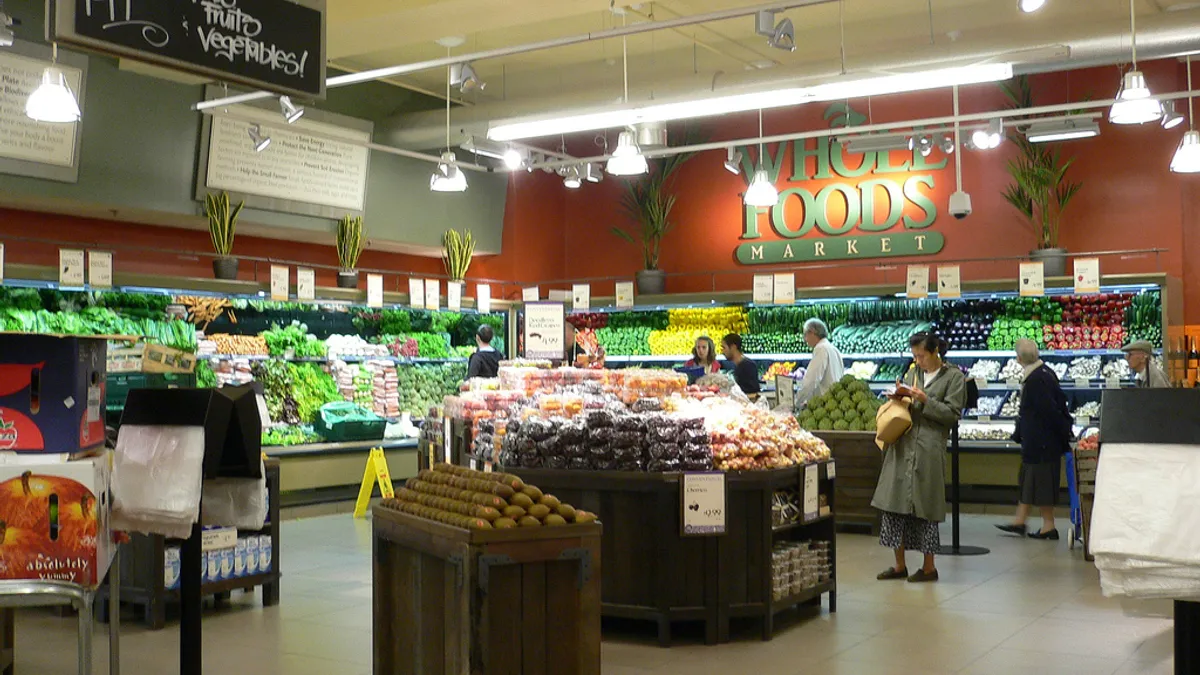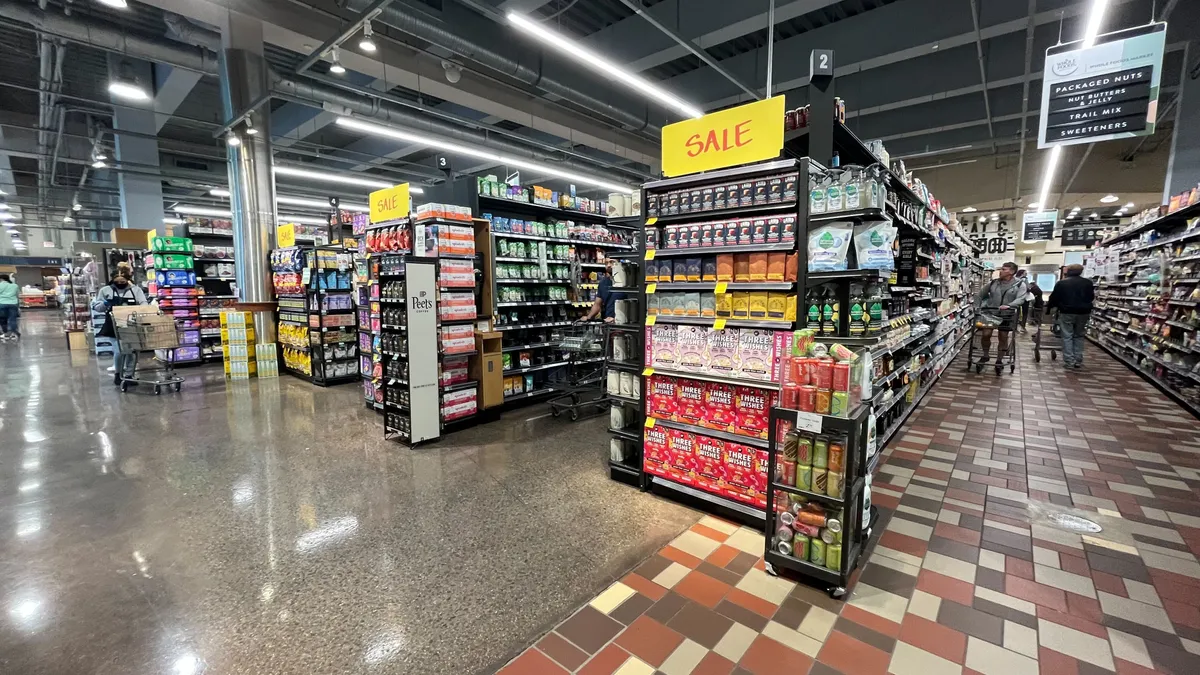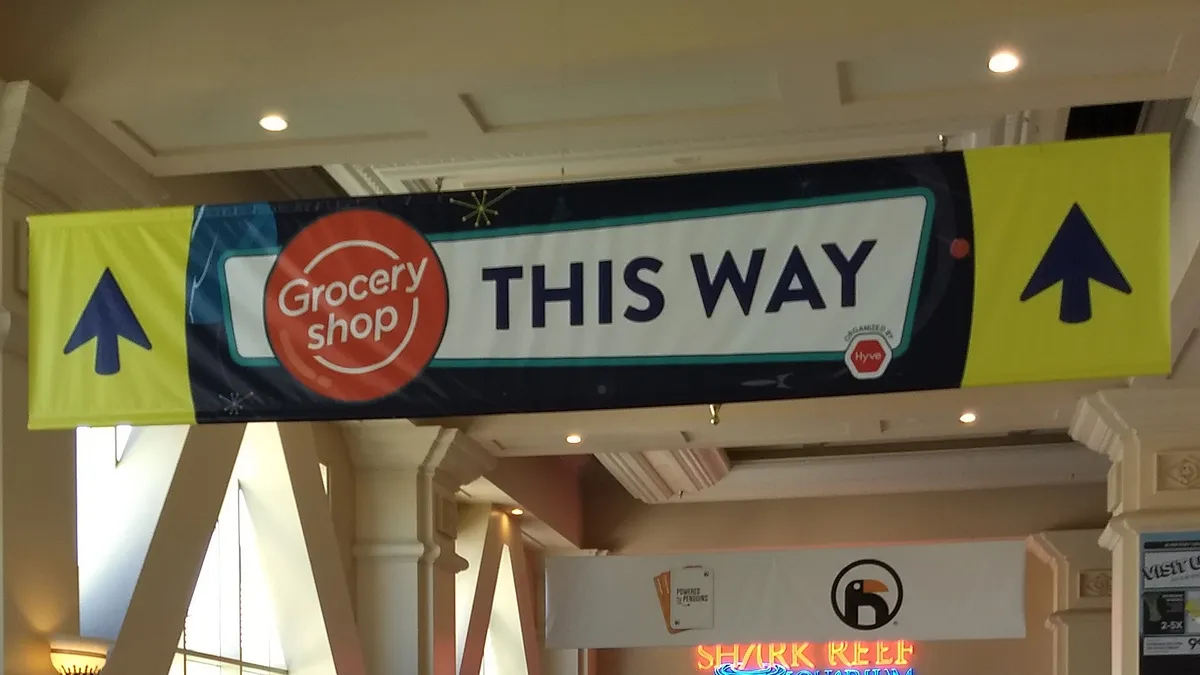Dive Brief:
- The credit risk for U.S. food retailers has increased significantly since Amazon announced its intent to acquire Whole Foods, according to MarketWatch. A report from S&P Global Market Intelligence notes that the median one-year potential for default has increased by nearly a third to 4.85% since the deal was announced June 16.
- North Carolina chain Ingles Markets saw its probability of default, or PD, rate rise 2.7% to 11.94%, while warehouse chain Smart & Final saw its PD rate climb 2.5% to 9.73%. Supervalu’s PD has risen 1.1% to 4.85%.
- “This model, which is influenced by the company’s stock performance as well as financial and systemic risk variables, demonstrates that the market is perhaps cautious about the prospects of the food retail industry in light of Amazon’s increasing footprint in the food industry,” Richard Peterson, senior director at S&P Global Market Intelligence, wrote in a note.
Dive Insight:
Retailers throughout the industry felt the shockwaves emanating from Amazon’s bid for Whole Foods, with company stocks plummeting in the days following the announcement. As S&P Global Market Intelligence experts note, the deal reaches into deeper metrics involving long-term financial fitness. It’s looking increasingly like certain retailers won’t survive the battle ahead.
Like many other experts, S&P’s team noted in their report noted Amazon’s potential to lower prices considerably and offer profitable new avenues for online grocery shopping. The company’s growth in grocery e-commerce has been slow so far, but with 460 Whole Foods stores at its disposal, Amazon could establish a faster, more efficient system than most retailers now employ.
For all the chaos Amazon could create, though, its pending Whole Foods acquisition is one of many pressures retailers are facing. Lidl just opened its doors and plans to build hundreds of discount stores over the next several years. Aldi, which matches Lidl in offering prices 20% to 30% lower than most grocers, is remodeling stores and plans to add nearly a thousand more locations to its network of 1,500 stores. Walmart and Kroger are slashing prices throughout their stores.
Grocers need to invest in order to stay competitive. But in this climate, S&P’s forecast indicates, struggling retailers may have a tough time securing additional funding.
Conventional retailers like Ingles Market, which saw its PD rate climb above 10% following Amazon’s blockbuster offer, are under immense pressure to retain customers that are increasingly defecting to discounters, natural and organic markets, and other formats. Many, like Food Lion, are spending millions to update their stores with fresher products and better values. Even with these changes, though, these retailers will struggle to stand out against hard discounters, Walmart and a potentially ascendant Whole Foods.










